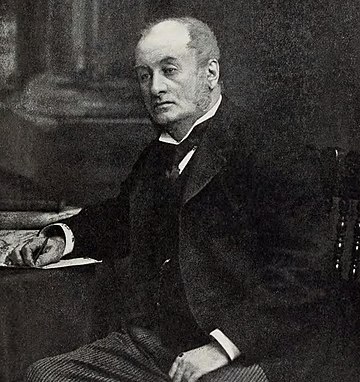(“From China to Peru” was an old phrase meaning from one end of the world to another. The vastness of the world was beyond most human beings except for a few Great Explorers who dared to venture into the unknown with a sense of adventurism and a noble purpose of human advancement. Nilgiri was fortunate to be visited by such Explorers including Sir Richard Burton. But this nugget is about another Explorer.- Robert Clements Markham, who brought Cinchona to the Nilgiris. Most in Nilgiris may not have heard about Peru but all have benefited from two wonder plants from Peru – Cinchona and Potato)
Before I introduce Markham and his wife, the following quote from him should be an eye opener for many who have misunderstood what is meant by ‘indigenous species’.
“The distribution of valuable products of the vegetable kingdom amongst the nations of the earth – their introduction from countries where they are indigenous into distant lands with suitable soils and climates – is one of the greatest benefits that civilization has conferred upon mankind. Such measures ensure immediate material increase of comfort and profit, while their effects are more durable than the proudest monuments of engineering skill (1862)”.
Markham, Clements Robert (1880-1916), born in Yorkshire, joined the Royal Navy as a cadet, first sailing to South America where he learned Spanish. He showed an interest in Arctic exploration from an early age.. After leaving the Navy, in 1852 he travelled to Peru where he explored
Inca sites and retained an interest in Peru for the rest of his life. In 1854 he joined what was to become the India Office, where he volunteered himself to lead the expedition to gather cinchonas in Peru for the establishment of plantations in British India. His Travels
in Peru and India (1862) and Peruvian Bark (1880) recount his adventures. He was accompanied by his wife Minna and the gardener John Weir. His plants were the first to arrive in the Nilgiris in October 1860, and Markham and Minna remained on the hills with the plants until January 1861. Although all his plants died within a short time, he returned to the Nilgiris in 1866 where he was impressed with the dramatic progress of the plantations. In 1867-68 he took leave to act as geographer and naturalist to the British contingent in the Abyssinian expedition. He helped muster support for the 1875 north polar expedition. He was a member of both the Royal Geographers Society the Hakluyt Society. He was instrumental in getting the Discovery (or National Antarctic) Expedition (1901-04) under Robert Falcon Scott underway. He died at home in London when he set fire to his bedclothes while reading by candlelight. In a tribute it was said he was “in all things an enthusiast rather than a scholar”
Minna Markham, married Markham in 1857. Minna was a linguist and
literature enthusiast who accompanied her husband on his expeditions to South America and India, keeping diaries of her experiences, and contributing to his work. ‘Minna Bluff in Antarctica was named after her by Markham’s close friend the explorer Robert Scot.
Nilgiri Documentation Centre

